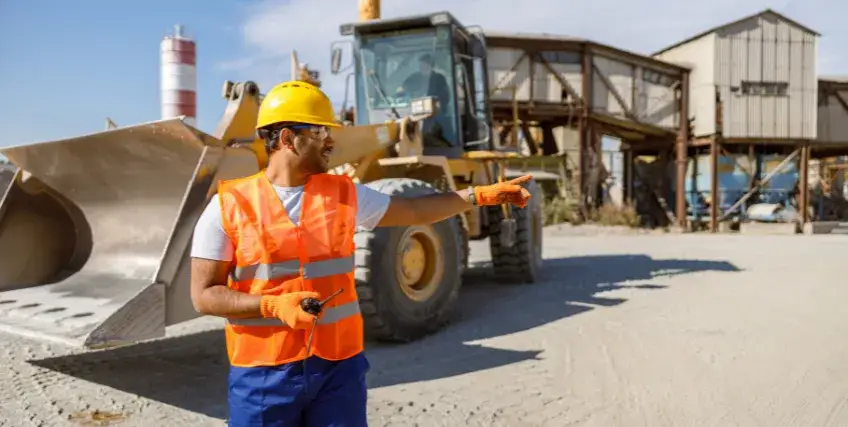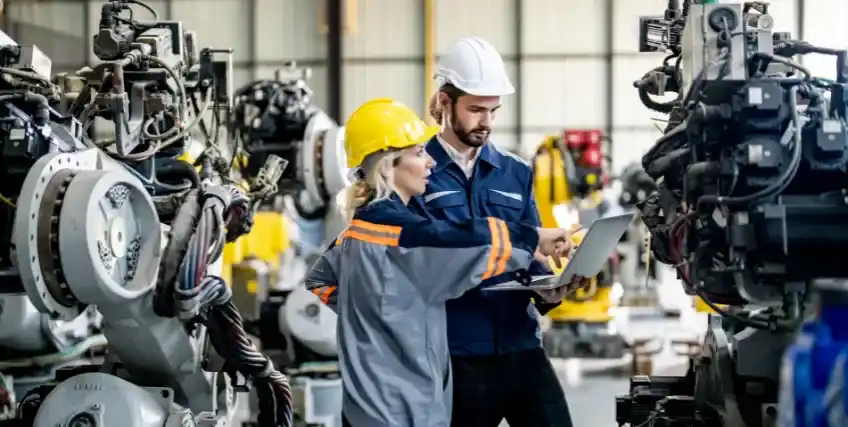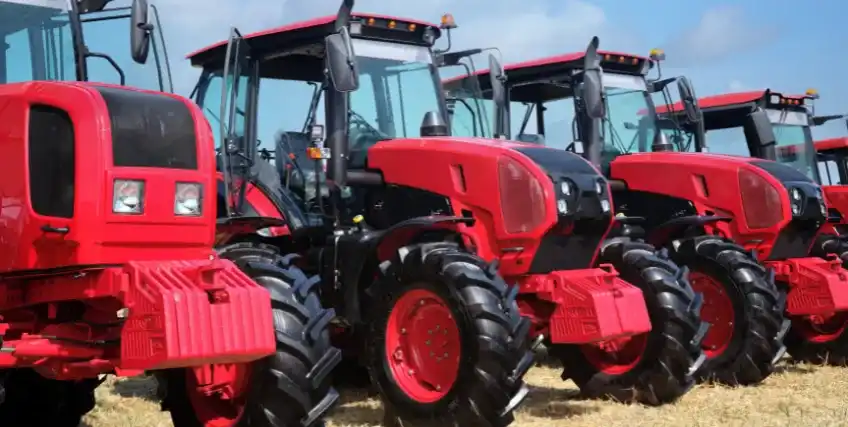Financing Heavy Equipment Smart Strategies for Contractors Building Their Fleets
September 23, 2025 | Last Updated on: September 23, 2025

In industries such as construction, agriculture, and manufacturing, the role of heavy equipment is a very crucial one. And with the construction industry being so competitive, having the right equipment can drive businesses to expand at the right time, by taking on newer and bigger projects.
But heavy equipment, such as cranes, bulldozers, excavators and other pieces of machinery, isn't cheap. They aren’t just tools, they’re serious investments. One new mid-sized excavator can cost anywhere from $185,000 to over $420,000, depending on specs and add-ons. And if you’re bidding for multiple jobs at once, your equipment needs to multiply just as fast. But what if your working capital can’t keep up?
That’s the reality many construction businesses are facing today. Equipment costs are rising, but so is demand. Contractors are expanding their fleets, taking on bigger projects, and racing to keep up. Yet, paying for heavy construction equipment in cash isn’t always the smartest move. It drains liquidity. It limits flexibility. It puts pressure where you don’t need it: on your cash flow.
Here’s where construction equipment financing comes into play. It’s not just about borrowing money. It’s about building strategically. It gives contractors room to breathe, space to grow, and options to align financing with project timelines.
Whether it’s through equipment loans, leasing, or business lines of credit, the goal is simple: secure what you need now, without choking your future. And for those juggling multiple contracts, financing doesn’t just help; it becomes smarter, long-term play.
In this article, we’ll break down real strategies for construction equipment financing that help contractors grow fleets without burning through cash. Because today, smart financing isn’t optional. It’s essential.
Why Smart Contractors Use Financing, Not Just Cash
There’s a reason more contractors are leaning on construction equipment financing. It keeps the business running without halting everything else.
Buying a backhoe or bulldozer outright sounds great in theory. But the truth is, draining six figures from your bank account for one machine can stall other priorities, such as payroll, materials, fuel, even bids for new jobs. And that’s not a smart trade-off.
Construction isn’t a slow game anymore. Projects move fast. Deadlines tighten. And when you're juggling multiple clients, you need equipment ready to go without waiting on capital to build up. That’s exactly where construction equipment financing steps in. It fills that gap as it provides access without a financial chokehold.
Even better, the landscape for financing has evolved. There’s a range of heavy equipment financing companies that offer tailored options for contractors. Whether you’re looking at financing solutions for excavators, backhoes, or skid steers, the market now meets you halfway with competitive rates, flexible terms, and online application tools that save time.
Smart contractors aren’t just financing because they have to. They’re financing because it frees them up to do more.
What are Equipment Loans?
For contractors who want full ownership, equipment loans are often the go-to option. It’s straightforward: you apply, get approved, and use the funds to buy the machine you need—whether it’s a new excavator, a used skid steer, or a heavy-duty backhoe.
What makes loans appealing is that you actually end up owning the equipment. That means long-term value stays with your business. You pay it off in installments, usually fixed monthly payments, over a set number of years.
But it is not so simple as it sounds. A loan may require a down payment, which can pinch if you’re low on working capital. And depending on your credit, the loan terms and interest rates could vary a lot.
Still, many contractors find it worthwhile, especially if the machine will be in use constantly. And when you tie this approach back to construction equipment financing, loans remain one of the most reliable ways to grow your fleet without blowing up your cash flow.
Why Many Contractors Choose to Lease
Not every machine needs to be yours forever. For growing contractors, equipment leasing can be a better fit, especially when you need to move fast, upgrade often, or try before fully committing.
With leasing, you get access to machinery, like forklifts, loaders, or compact excavators, without shelling out massive upfront costs. You make predictable monthly payments, and once the lease ends, you either return it, renew it, or sometimes buy it outright.
The appeal here is that it keeps cash in your pocket. You’re not locked into ownership, which means you can adjust your fleet as jobs shift. Need more functionality for a short-term project? Lease it. Not sure how often you'll need a particular machine? Don’t buy it yet.
Of course, leasing options usually cost more long term if you keep renewing. And there’s no equity at the end unless you buy. But for many contractors, the flexibility outweighs that downside. That’s why more businesses are folding leasing into their broader construction equipment financing strategies.
Heavy equipment lending means different for different borrowers. Leasing plays a big part in modern construction equipment financing, especially for businesses that are scaling, not settling.
Lines of Credit: The Contractor’s Quiet Advantage
Sometimes you don’t need a massive loan or a long lease. Sometimes, you just need flexibility. That’s where lines of credit come in.
Unlike traditional construction equipment financing, a line of credit doesn’t give you one lump sum. Instead, you tap into a set limit as needed, like covering short-term equipment needs, repairs, upgrades, or even rental payments when timelines shift unexpectedly.
You only pay interest on what you use.
For seasonal contractors or those juggling multiple projects, this setup can be a lifesaver. For example, if you’re bidding on three jobs and need extra liquidity to cover a short-term equipment gap then credit lines let you move fast without a full-blown loan process.
Most online application systems today make it easy to apply and get decisions quickly depending on your credit profile.
Keep in mind that it’s not a replacement for all financing but it can be used as part of your larger construction equipment financing strategy, it gives you breathing room. And in this industry, that space can be the difference between winning and missing a contract.
Choosing the Right Option for Your Business
Every construction business moves at its own pace. Some thrive on long-term ownership. Others rely on flexibility. But when it comes to construction equipment financing, you can’t afford guesswork. Matching the right plan to your actual operations makes all the difference.
1. Ownership Needs
If you want full control and long-term use, equipment loans make the most sense. You build equity over time and can keep or resell the machine later. Just make sure you understand the full loan terms: from interest rates to down payment requirements. For many businesses, this is the most straightforward path within construction equipment financing.
2. Flexibility Demands
If you need gear for short-term projects or rapid upgrades leasing options might fit better. You won’t own the equipment, but you’ll avoid tying up capital. Many heavy equipment financing companies offer plans tailored for fast-growing crews. Leasing is often used as a short-term solution under broader construction equipment financing strategies.
3. Managing Cash Flow
If projects come in waves, a line of credit helps bridge gaps. Pay only for what you use. It’s ideal for covering last-minute equipment needs or repairs without stretching working capital thin.
4. Evaluating the Right Provider
Always check if your provider is NMLS-registered, an equal housing lender, or affiliated with member FDIC institutions. Reliable platforms offer transparent terms, fast online applications, and support that doesn’t disappear once you’ve signed the dotted line.
Is It Time to Rethink Your Old Equipment Loan?
Maybe you locked into a high-interest loan two years ago. Maybe your business has grown since then. If so, heavy equipment refinancing might be worth considering.
It lets contractors swap existing debt for better loan terms, like lower monthly payments, reduced interest rates, or a longer repayment window. More than shaving numbers, it’s about regaining breathing room.
When timed right, construction equipment financing through refinancing can free up cash for new equipment, cover unexpected costs, or give your business the edge to take on larger jobs.
But it’s not without a few drawbacks.
Here’s what to watch out for:
- You may extend your debt timeline further than planned
- There could be prepayment penalties on your original loan
- Upfront fees for new financing paperwork
- Risk of restarting interest on a new amortization schedule
- Credit checks might temporarily impact your profile
Still, when done with a clear goal and through trusted financing solutions, refinancing gives your business a chance to recalibrate and move forward stronger.
Conclusion
In the end, construction equipment financing is not just about getting machines; it’s about building a strategy. A strategy that lets you grow, stay competitive, and protect your working capital at the same time.
Whether you go with equipment loans, leasing options, or flexible lines of credit, what matters is how it fits your project flow and goals. The right loan terms can set your business up for steady wins and not just for short-lived pushes.
Contractors who thrive aren’t always the ones with the biggest machines. Often, they’re the ones with the best plan to pay for them. No one ever grew a business by draining the tank dry. You need fuel, yes, but also control. That’s exactly what construction equipment financing is designed to give.
FAQs About Construction Equipment Financing Strategies for Contractors
1. What is construction equipment financing?
Construction equipment financing is a way to fund the purchase or lease of heavy machinery like bulldozers, cranes, or excavators. Instead of paying upfront, you spread the cost over time through monthly payments, keeping your working capital free for other needs. It’s often used by contractors who want to expand without draining their bank accounts.
2. Can I finance used equipment, or does it have to be new?
Many financing programs support used equipment. In fact, some contractors prefer it. Used excavators or skid steers can be significantly cheaper, and financing still allows for manageable installments. Just make sure the provider accepts the age and condition of the equipment, and that it's in solid working shape.
3. How does heavy equipment refinance work?
Heavy equipment refinancing means replacing your existing equipment loan with a new one, often at a lower rate or with better terms. It can reduce monthly payments, improve cash flow, or even give you some cash back. Just be careful of prepayment penalties or fees that might cancel out the benefits.
4. What’s the difference between leasing and loans for equipment?
Equipment loans let you own the machine once the loan is paid off. Leasing options, on the other hand, are like renting. They cost less upfront but don’t give you ownership unless there's a buyout clause. Leasing is great for short-term projects or gear you expect to upgrade often.
5. Are there construction equipment financing options for smaller contractors?
Many heavy equipment financing companies offer flexible financing options for small or mid-size businesses. These include low-down-payment loans, startup-friendly terms, and online platforms that make the application process easier and faster. Whether you need forklifts, backhoes, or just a trailer, there’s usually a solution available.
Frequent searches leading to this page
Term Loans are made by Itria Ventures LLC or Cross River Bank, Member FDIC. This is not a deposit product. California residents: Itria Ventures LLC is licensed by the Department of Financial Protection and Innovation. Loans are made or arranged pursuant to California Financing Law License # 60DBO-35839




